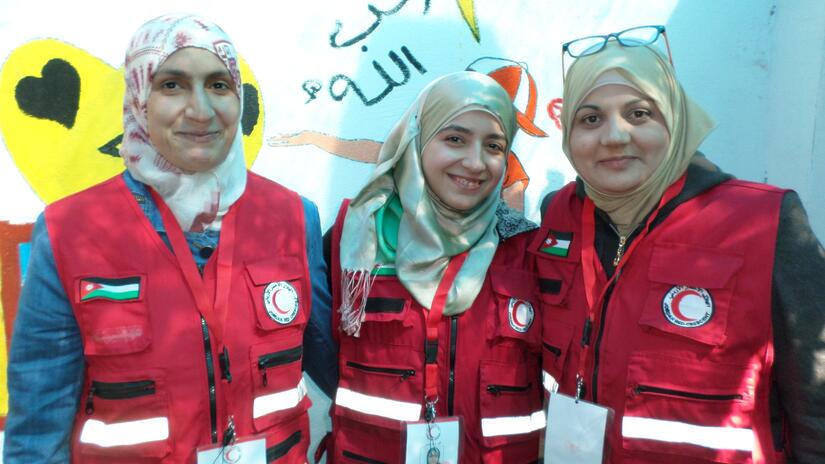By Prof. Cecile Aptel, Director of Policy, Strategy and Knowledge, IFRC
Gender and diversity are about what we do, how we do it, and who we are as humanitarians.
Diversity is at the heart of the Red Cross and Red Crescent network, which is made up of National Societies assembling 13.7 million volunteers in more than 190 countries, and an international secretariat in Geneva. A critical element of that diversity is gender equality, which is key to a humanitarian organization delivering better support and services.
Sadly, we know from experience that women and girls are often disproportionately affected by disasters or crises, and are at higher risk of violence, abuse, neglect, discrimination, and being left behind. To effectively reach these women and girls, humanitarian organizations must themselves be inclusive: they must include women and girls’ perspectives at all levels of decision-making, from the design of a programme to its evaluation through its delivery, and therefore must have women at all levels, including the highest ones.
For several years now, the breadth and depth of the programmes and services of the International Federation of Red Cross and Red Crescent Societies (IFRC) have been captured in its Federation-Wide Databank and Reporting System. This year, for the first time, we have reviewed our performance by analysing the number of women reached by Red Cross and Red Crescent programmes, as well as the proportion of women in staff and governance. The sex disaggregated data at all levels of the network - from leadership and governing bodies, to paid staff and volunteers, and all the way to the people reached and supported by its activities - has been analysed and the results are published in the Everyone Counts report, which we are launching today.
As of 2017, women comprised 52 per cent of Red Cross and Red Crescent volunteers, 50 per cent of National Society staff, and 45 per cent of IFRC’s paid staff worldwide. Yet, the percentage of women on IFRC’s Governing Board was only 17 per cent – significantly lower than the 31 per cent figure across National Societies. Globally, only 21 per cent of National Society Presidents and just 31 per cent of National Society Secretaries General are women. The results are variable by region and are affected by both the National Societies themselves as well as the communities they are situated in: if a country is doing well with regard to gender equality, this tends to be reflected within its National Society.
These numbers provide a baseline but we know that sex disaggregation is only one indicator of gender equality, and other issues should be taken into consideration when striving for a more inclusive Red Cross and Red Crescent. To start with, sex and gender are different things: sex refers to biology, and does not capture all the dimensions of gender as a social construct. The categories of men, women, boys, girls and other gender identities are all made up of individuals with different lives, roles and vulnerabilities, and societal structures often amplify these.
In this context, is it enough for humanitarian organizations to reach equally men and women? Shouldn’t they also aim to ensure that the specific needs of women and girls are addressed, for instance in terms of menstrual hygiene? And contribute to achieving a more level playing field where parity can actually lead to gender equality, social justice, and a better future?
Having women able to speak and be heard at all levels of an organization is vital if these questions are to be asked, and to be answered meaningfully. This year’s Everyone Counts report is a reminder that more is needed on this front. Because there are structural and cultural barriers preventing skilled, talented, and committed women from progressing in their humanitarian careers, everyone – especially men - should work together to dismantle those barriers.
The IFRC is committed to rising to this challenge. It has recently announced that, by 2028, its secretariat will have gender parity at all staffing levels. It is also working with National Societies across the world to help them set their own targets based on their own analysis of current staffing as well as projected growth and staff turnover.
A Red Cross and Red Crescent network with sex parity as a prelude to gender equality will be better able to function and deliver more considered and more effective services. It will be a better reflection of the communities we work alongside, and be better able to harness the full power of humanity in all its diversity. This is who we should be as humanitarians.
Article
Investing in women means ‘access to resources to overcome challenges’
Investing in women means ‘access to resources to overcome challenges’
| Article

